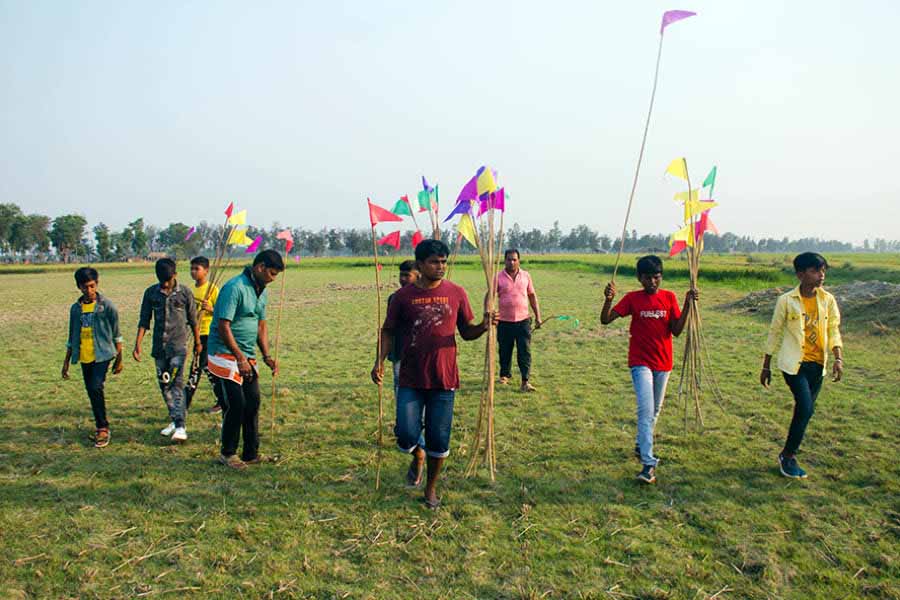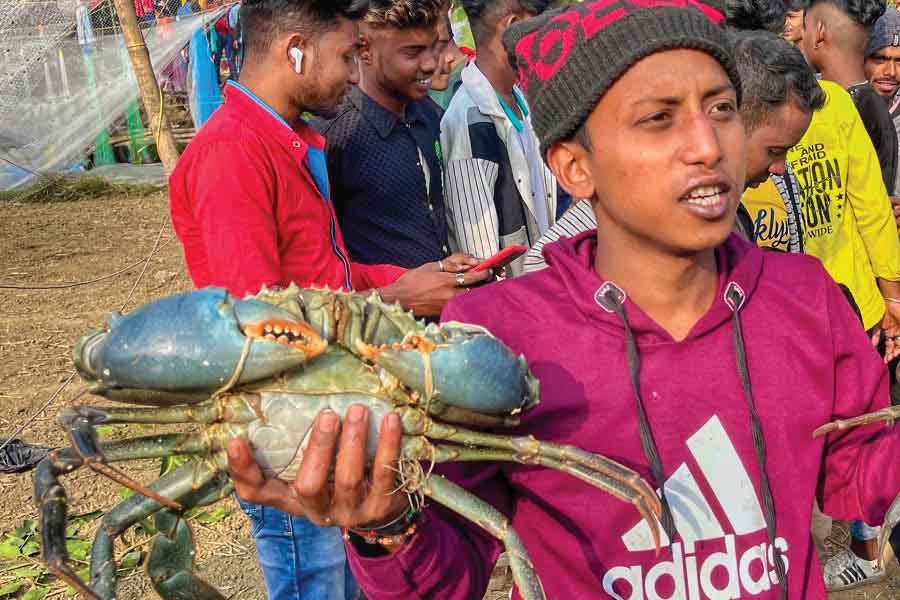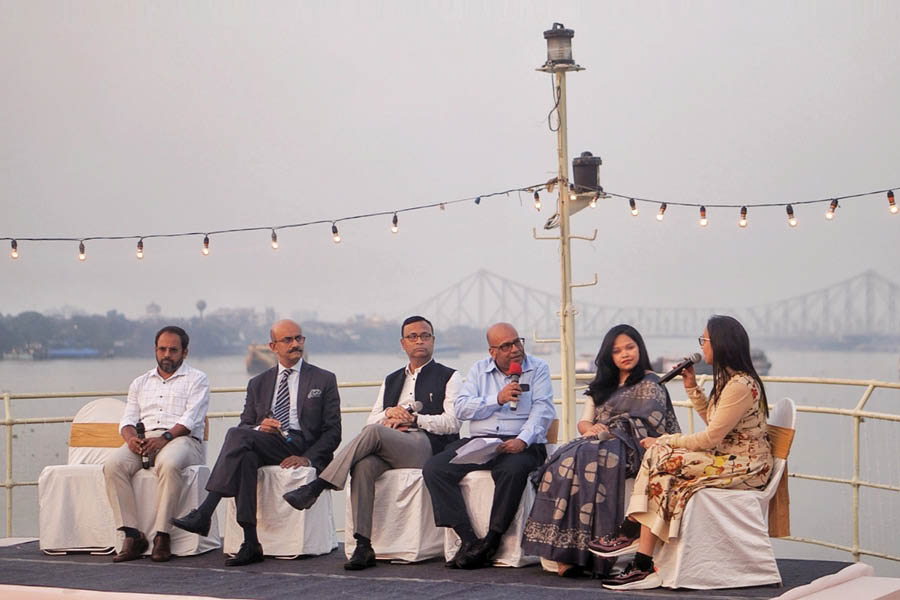The crops have been harvested and barren agricultural fields of south Bengal stretches all the way to the horizon. The villagers have ample time and it is a time to relax and make merry. With the approaching Bengali New Year and stock of freshly harvested crops, it is a time to celebrate and indulge in some recreation.
In a unique celebration, horse races are held over a large portion of south Bengal to celebrate the harvest and welcome Poila Baisakh. Horses are not common in the plains of Bengal but the horse races are an integral part of south Bengal culture. Although there has been any recorded history of the origin of these festivities, oral records suggest that the custom dates back over several centuries.

Around Poila Baisakh (middle of April), Bengal experiences dry and hot weather and the scarcity of water leads to deep cracks in the soil. The ground becomes hard and dry. It is believed that the hooves of running horses loosen the soil and soften the ground. In the process, the land becomes ready for the sowing of the next cycle of crops. Thus, entertainment also has a share of utility.
The races usually start from the year-end (mid-March) and continue throughout the entire month of Baisakh, the first month in the Bengali calendar (mid-April to mid-May). The races are held in regions south of Baruipur and extend to Canning on the east and Lakshmikantapur in the south. During this period, this region witnessed a series of horse races and there are even instances of multiple races in a single day.

Volunteers mark the course with colourful paper flags
These horse races double up as festivities and include several other sources of entertainment such as dance and magic shows and normally end with a jatra (theatre) performance. Firecracker shows have recently been an addition to these festivities. Several makeshift food stalls occupy the fair-ground selling locally made kulfi and ice creams to stalls selling chowmein and chilli chicken.
The Canning region witnessed several horse races, some of which attracted huge crowds. The biggest of these races happens on the first day of Bengali New Year. The race takes place in Hinjakhali in the Kara Kathi region around 15km south of Canning railway station.
The race attracts over 25 participants and a huge crowd. The race usually starts around 4pm and consists of several heats, semi-final and final, which ends around 6pm. The end of the race marks the beginning of the other festivities, which continue well into the night.

Even today, the horse race still remains the prime attraction of these rural fairs. The horses run along an uneven course stretching across the dry cracked barren agricultural field jumping over the aals (mud embankments separating the fields) and racing past water bodies. The course is marked with colourful paper flags mounted on thin sticks.
To witness the horse race in full glory, it is best to visit the venue a couple of hours before the race starts. The horses arrive in open tracks and are then moved to a shaded region, preferably under large trees, and are prepared for the race. Meanwhile, the organisers prepare the race route by planting the paper flags along the course. This year the course was kept short as the crops in many of the adjoining fields have not been harvested. This is followed by the issuing of chest numbers to the jockeys. Although known as chest numbers they are attached to the back of the jockey and the numbers are written in Bengali numerical.

A temporary gate welcomes visitors to the fairground and (right) a poster of the horse race and other events
Before the race, the owner of the race parades the horse along the course accompanied by the jockey. The jockey are usually young boys, some even in their pre-teens. Their tricks of the trade are a pair of sticks and a cycle wheel tube. As the horses don’t come with a saddle and stirrup, the cycle wheel tube wrapped round the horse body helps the jockey to keep balance.
Sadly, many of the so-called horses are actually mules and even most of the horses are old and are not able to run fast. People familiar with professional horse racing in the race course will definitely be disappointed, but in spite of all odds the races have their own charm and represent an age-old culture of south Bengal.
With the passage of time and new sources of entertainment, the age-old race is losing its popularity. So, if you are planning to witness the amazing horse race of south Bengal don’t be late, as it can soon become a thing of the past.


